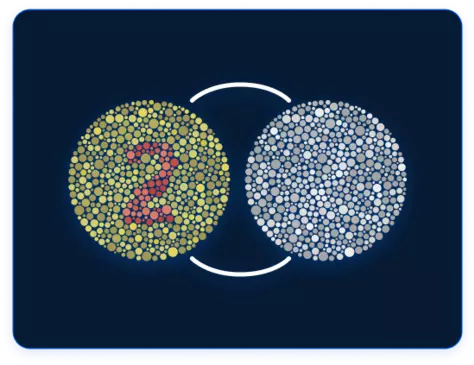What To Do If Your Child is Colorblind?
Color blindness is a genetic disease, it has no cure. Only aids and adapting to living with color blindness can help to ease the condition. But amongst all the treatments that your child might receive for its color blindness, assurance and mental support lies at the top position.
Here are the following ways to tackle the color blindness of your kid using mental support.
Provide Information About Color Blindness
To live the condition of color blindness for the whole life, your child needs to understand what exactly he is suffering through. You shall also mention to him/her clearly that color blindness is just a condition of color vision deficiency and not a disease to be panicked of. Color blindness is rather a disability than a disease.
You shall explain how common the disability is among the population and many live with the condition gracefully. Such Children should be made aware of their conditions as earliest as possible so that they know what may harm them.
What jobs are not meant for them and how can they improve their career by focusing on the jobs that are meant for them. When children know their condition, they can wittily defeat anyone who bullies them with their knowledge.
Communicate With Teachers
Schools are the second home to children and teachers are the second parent. Teachers and the members of the school ought to know about the health condition of every student. Especially, When a child suffers from such a condition which may hamper its ability to compete with normal children academically.
Teachers can help your child by
- Providing them with assistance in exams involving identifying colors.
- Using only white chalks and not colored chalks on the blackboard.
- Providing textbooks having black and white print instead of color prints.
- Providing labeled colors and items for art class.
- Making sure the other children do not bully the color blinds.
Make Adjustments At Home
Home is the place where we spend almost half of our lives. While we can think of comfort at Home, living at home can be challenging for the color blinds on the contrary. Commonest things like food, distinguishing between ripe and unripeness of fruits, and choosing color combinations to wear are problematic for such people. To cope with this, some adjustments must be made at home to make the home comfortable for the color blinds as well.
- Memorizing the order of the things for fixed colored sequences.
- The assistance of a good color-visioned person for choosing clothes and food items.
- Avoiding colored lighting in the home.
- Labeling colored items by names or shapes instead.
- Organizing dressers by labeling color names.
- Using color corrector glasses.
Focus On Strengths And Interests
Color blindness is a disability, but with every disability comes a special ability too! For example, when one of the senses becomes weak, the rest of the senses become strong to compensate for survival.
This is the rule of nature. Hence, instead of frowning over the condition, one shall learn to embrace and welcome their special abilities to overcome difficulties. There are many famous personalities who despite being colorblind are successful in their fields of interest.
Abraham Lincoln, Stewie Wonder, Mark Zuckerberg, and Bill Gates are a few of many such examples who were color-blind, yet successful. Take inspiration, find your interests and practice hard to make them your strengths and achieve your goals.









